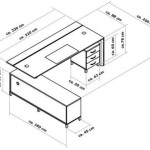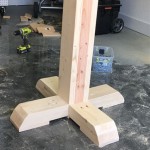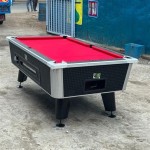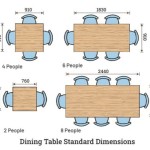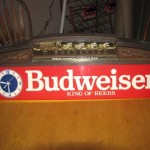Choosing the Most Comfortable Bean Bag Filler
The selection of the ideal bean bag filler profoundly influences the overall comfort and longevity of a bean bag chair. Various filler options exist, each possessing unique characteristics impacting the seating experience. Understanding these differences is crucial for making an informed decision tailored to individual needs and preferences.
This article explores the most common bean bag filler types, examining their properties, advantages, and disadvantages, thereby providing a comprehensive guide to selecting the most comfortable option. Factors such as durability, support, cost, and environmental impact will be considered to facilitate a well-rounded assessment.
Expanded Polystyrene (EPS) Beads
Expanded Polystyrene (EPS) beads are arguably the most widely recognized and frequently used bean bag filler. These beads are composed of small, lightweight, and spherical polystyrene particles that are expanded using steam and pressure. The resulting structure is primarily air, making EPS beads remarkably lightweight and buoyant.
The primary advantage of EPS beads lies in their affordability. Compared to other filler options, EPS beads are generally the least expensive, making them a popular choice for budget-conscious consumers. Furthermore, their lightweight nature contributes to the portability of the bean bag, allowing for easy relocation within a room or even between different spaces.
However, EPS beads are not without their drawbacks. Over time, the beads compress and lose their volume, resulting in a flattened and less supportive bean bag. This compression necessitates refilling or replacement of the beads, adding to the long-term cost. Additionally, EPS beads can generate static electricity, causing them to cling to clothing and surfaces, which can be inconvenient.
From an environmental perspective, EPS beads are not biodegradable and can contribute to plastic waste. While recycling programs for EPS exist in some regions, they are not universally available, increasing the likelihood of these beads ending up in landfills. The production process also requires energy and resources, further adding to its environmental footprint.
Expanded Polypropylene (EPP) Beads
Expanded Polypropylene (EPP) beads offer a more durable alternative to EPS beads. Similar to EPS, EPP beads are also lightweight and composed primarily of air. However, EPP boasts a higher density and resilience, allowing it to withstand greater compression and maintain its shape for a longer period.
The superior durability of EPP beads translates to a longer lifespan for the bean bag, reducing the frequency of refilling or replacement. This makes EPP a more cost-effective option in the long run, despite its higher initial price point compared to EPS. Furthermore, EPP beads exhibit better resistance to moisture and chemicals, making them suitable for both indoor and outdoor use.
EPP beads provide a firmer and more supportive seating experience compared to EPS. This enhanced support is particularly beneficial for individuals who require additional lumbar or back support. The beads conform to the body's contours, distributing weight evenly and reducing pressure points.
Environmentally, EPP is considered to be more sustainable than EPS. It is recyclable and can be reused in various applications. The production process is also generally less energy-intensive than that of EPS. However, it is essential to verify the availability of EPP recycling programs in one's local area to ensure responsible disposal.
Memory Foam
Memory foam, also known as viscoelastic foam, is a polyurethane-based material that conforms to the body's shape in response to pressure and heat. Upon removal of pressure, memory foam gradually returns to its original form. This property allows memory foam to provide exceptional support and pressure relief, making it a popular choice for mattresses, pillows, and, increasingly, bean bag filler.
Memory foam bean bag filler typically consists of shredded memory foam pieces, which create a plush and comfortable seating experience. The shredded form allows for better airflow and prevents the bean bag from becoming overly dense or rigid. The conforming nature of memory foam evenly distributes weight, minimizing pressure points and promoting relaxation.
The primary advantage of memory foam is its superior comfort and support. It provides excellent cushioning and conforms to the body's contours, offering a personalized seating experience. Memory foam is also known for its durability, maintaining its shape and support over time, reducing the need for frequent refilling.
However, memory foam can be more expensive than EPS or EPP beads. The higher cost is attributed to the more complex manufacturing process and the inherent properties of the material. Additionally, memory foam can retain heat, which may be uncomfortable in warmer climates. Some individuals may also find the conforming nature of memory foam to be too enveloping or restrictive.
From an environmental standpoint, memory foam is generally not considered to be a sustainable material. It is not easily recyclable and can release volatile organic compounds (VOCs) during its production and lifespan. However, some manufacturers are now producing memory foam using plant-based materials and eco-friendly processes, mitigating some of these environmental concerns. Careful consideration of the sourcing and manufacturing practices is recommended when choosing memory foam filler.
Microfiber
Microfiber is a synthetic fiber finer than one denier or decitex/thread. This is smaller than the diameter of a strand of silk (which is about one denier), which is itself about 1/5 the diameter of a human hair. Fabrics created from microfiber are exceptionally soft and durable. This makes them ideal materials for bean bag filling.
Microfiber fill offers a unique sensation compared to beads. Instead of individually conforming to the body, the microfiber creates a more uniform, cloud-like structure. This makes for a gentler, more forgiving seating experience. This is particularly appealing to people who find the feeling of individual beads or shredded foam to be too textured.
Microfiber is also hypoallergenic, which is a significant advantage for individuals with allergies or sensitivities. Unlike natural fibers, microfiber is resistant to dust mites, mold, and mildew. This makes it a cleaner and healthier option for bean bag filling. Furthermore, microfiber is generally easy to clean and maintain.
While microfiber offers exceptional comfort and hypoallergenic properties, it can be more expensive than traditional bean bag fillings such as EPS beads. The higher cost reflects the more complex manufacturing process and the higher quality of the material. Additionally, microfiber can compact over time, requiring occasional fluffing or refilling to maintain its loft and support.
The environmental impact of microfiber is a topic of considerable debate. Microfibers are synthetic materials, and their production relies on petroleum-based resources. Furthermore, the shedding of microfibers during washing contributes to plastic pollution in waterways. However, some manufacturers are now exploring sustainable alternatives, such as recycled microfiber or plant-based microfiber options.
Mixed Fills
Combining different types of bean bag fillers can offer a customized seating experience that leverages the strengths of each material. For instance, a mixture of EPS beads and memory foam can provide a balance of affordability, support, and comfort. The EPS beads provide the bulk and lightweight nature, while the memory foam adds cushioning and conforms to the body's contours.
Another common combination is EPP beads and microfiber. This blend offers enhanced durability, support, and a softer seating surface. The EPP beads provide long-lasting support and shape retention, while the microfiber adds a layer of plush comfort and reduces the potential for static cling.
The key advantage of mixed fills is the ability to tailor the bean bag's properties to specific needs and preferences. The ratio of each material can be adjusted to achieve the desired level of firmness, support, and comfort. This allows for a more personalized seating experience compared to using a single type of filler.
However, mixing fillers can also present challenges. The different materials may settle or shift unevenly over time, requiring periodic fluffing or redistribution. Furthermore, the cost of mixed fills can be higher than using a single type of filler, especially if the combination includes more expensive materials like memory foam or microfiber.
When considering mixed fills, it is essential to research the compatibility of the different materials. Some combinations may not work well together, resulting in a less comfortable or less durable bean bag. Consulting with a knowledgeable retailer or manufacturer can provide valuable insights and recommendations.

Bean Bag Filler Everything You Need To Know Wilson Dorset

Types Of Bean Bag Filling And How To Choose

Get Cozy With Eco Friendly Alternative Bean Bag Fillers

Types Of Bean Bag Filling And How To Choose

Types Of Bean Bag Filling And How To Choose

Moon Pod Review Is It The Best Bean Bag Chair Out There Reviewed

The Most Comfortable Bean Bag Filler Evaluating Top Options For Ultimate Comfort Strawpoll

12 Best Bean Bag Chairs 2024 Most Comfortable

Lovesac Sacs Bean Bag Chairs For S Kids

8 Best Bean Bag Chairs To Buy In 2024
Related Posts

